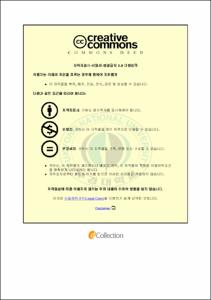수치해석을 통한 DCM기둥으로 지지된 성토체의 토목섬유보강에 따른 효과 분석
- Alternative Title
- Parametric Evaluation of Geosynthetic Reinforced DCM Column supported Embankments Based on Finite Element Analysis
- Abstract
- Among the various ground stabilizing techniques is pile supported embankment which bears the embankment fill on top of the soft ground by installing piles in the soft ground to transfer the load of fill to the direct supported layer using the soil arching phenomenon of embankment ground. However, there is relatively big differential settlement between the piles when using only piles to support the embankment fill, so Geosynthetic reinforced pile supported embankment (GRPS) is often used with Geosynthetic reinforcement in order to reduce differential settlement.
This study uses PLAXIS 2D, a 2D finite element program, to analyze the soil arching phenomenon following the interval of different types of DCM (Deep Cement Mixing) columns, the improvement of load transfer effect to the DCM columns with the increase in Geosynthetic reinforcement, and the reduction effect of differential settlement between columns.
As a result of finite element analysis, GRPS shows relative difference in the reduction effect of differential settlement and stress reduction ratio according to the area replacement ratio and the type of DCM, but the comprehensive review has shown that the reduction effect of maximum differential settlement and stress reduction ratio is greatest when reinforced with DCM columns and 2 Layers of geogrid whose tensile strength is 50kN/m.
As a result of the analysis of reduction of differential settlement by Geosynthetic reinforcement and the reduction effect of stress reduction ratio, Geosynthetic reinforcement improved the load transfer effect to DCM columns that are installed for improvement ground and the reduction effect of differential settlement.
- Issued Date
- 2015
- Awarded Date
- 2015. 2
- Type
- Dissertation
- Publisher
- 부경대학교 대학원
- Alternative Author(s)
- Jeong, Si Dong
- Affiliation
- 부경대학교 대학원
- Department
- 대학원 토목공학과
- Advisor
- 정두회
- Table Of Contents
- 목 차
표 목 차 ⅲ
그 림 목 차 ⅳ
Abstract ⅵ
제 1 장 서 론 1
1.1 연구 배경 1
1.2 연구 동향 및 목적 3
제 2 장 이론적 고찰 5
2.1 지반아칭의 정의 및 작용원리 5
2.2 지반아칭효과 분석방법 7
2.3 응력감소비 해석방법 10
2.3.1 Hewlett and Randolph's method 10
2.3.2 Low's method 12
2.3.3 BS8006 method 13
2.3.4 Adapted Terzaghi's method 15
2.3.5 Adapted Guido's method 16
2.3.6 Carlsson's mothod 16
2.3.7 Swedish practice method 17
2.3.8 지오그리드를 보강한 경우의 응력감소비 18
제 3 장 해석기법의 검증 22
3.1 Cam-Clay model을 이용한 수치해석 22
3.2 Mohr-Coulomb model과 Cam-Clay model해석결과 29
제 4 장 토목섬유보강 말뚝지지 성토체의 해석 33
4.1 해석조건 및 모델링 33
4.2 시멘트 개량체 기둥지지 성토체의 거동 분석 39
4.3 토목섬유보강 시멘트 개량체 기둥지지 성토체의 거동 분석 42
4.3.1 지지형식에 따른 지반아칭효과 분석 42
4.3.2 면적치환비에 따른 지반아칭효과 분석 45
4.4 토목섬유보강에 따른 지반아칭효과 분석의 결과 49
제 5 장 결 론 53
참 고 문 헌 55
부 록 A. 매개변수 계산과정 59
부 록 B. 압밀침하 계산과정 60
- Degree
- Master
- Files in This Item:
-
-
Download
 수치해석을 통한 DCM기둥으로 지지된 성토체의 토목섬유보강에 따른 효과 분석.pdf
기타 데이터 / 8.4 MB / Adobe PDF
수치해석을 통한 DCM기둥으로 지지된 성토체의 토목섬유보강에 따른 효과 분석.pdf
기타 데이터 / 8.4 MB / Adobe PDF
-
Items in Repository are protected by copyright, with all rights reserved, unless otherwise indicated.